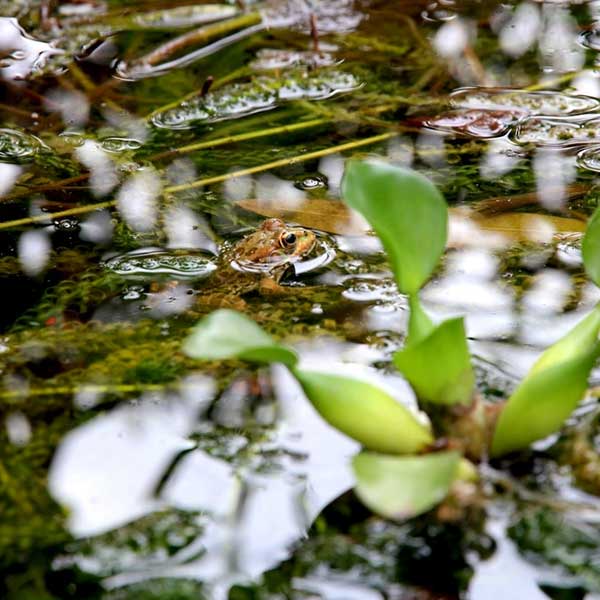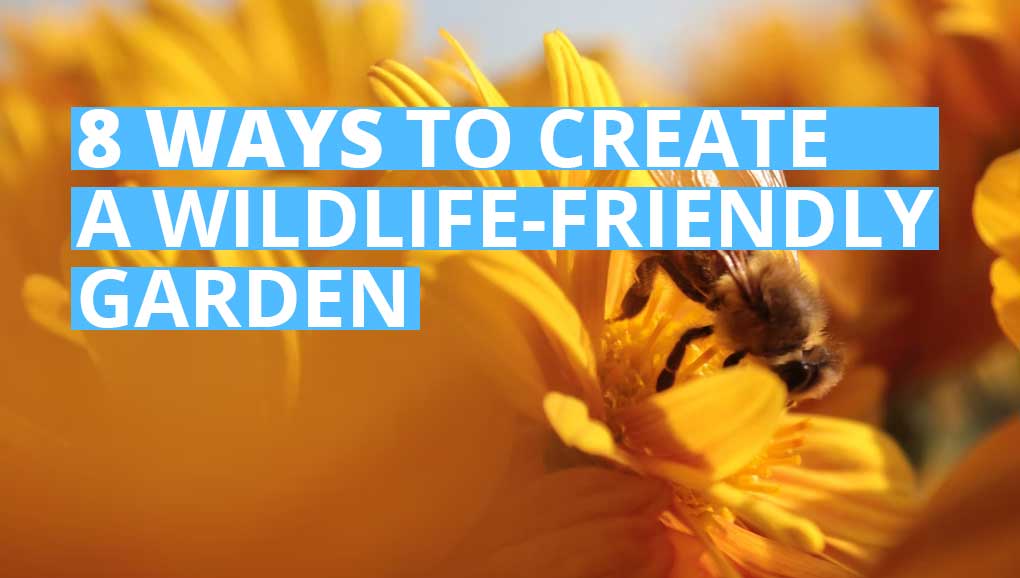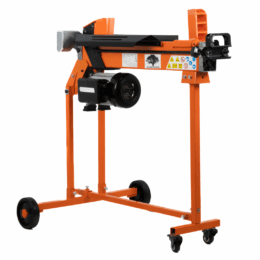Last Updated on November 4, 2021 by Forest Master
Now that the buzz of summer has calmed, and the garden is starting to descend into a cascade of golds, browns, and yellows – you may have noticed an array of small mammals, birds and creepy crawlies making the most of the autumn foliage and opportunities for feeding.
Maybe you’ve noticed squirrels scrambling across branches; hedgehogs rustling in the leaves or birds feasting on the bright red berries of our native trees and shrubs.
Our gardens are vital shelters for wildlife – from foxes to bees – and it’s crucial to encourage increased animal activity where possible in your garden.
In this piece, we’ll be covering what you can do to encourage more animal activity in your garden with nine wildlife-friendly landscaping tips.

Why are Gardens Important for Wildlife?
According to the Wildlife Gardening Forum, 87% of UK homes contain garden spaces of varying sizes, which equates to roughly 23 million gardens covering a space about a fifth the size of Wales. This coverage is larger than any of our nature reserves combined.
Unfortunately, a considerable portion of this garden space has been lost to hard surfacing (such as patios and concrete) which, along with climate change, has contributed to considerable habitat depletion.
With such a considerable portion of space available in our gardens, it’s easy to see how even the subtlest of changes can make a considerable difference for our native wildlife species.
Hedgehogs, voles, frogs, newts, and bats are all on the decline in the UK – in fact, a report published in 2020 shows that up to a quarter of our native wildlife species are on the brink of extinction.
Wildlife-friendly landscaping is about readdressing the balance for the benefit of both the animals and the inhabitants too. After all, by thinking carefully about how you manage your wildlife, you can reap the benefits of seeing many species profiting from your carefully constructed outdoor space.
As a general rule of thumb, keep in mind that animal and plant life, just as we human beings do, requires four things to thrive:
- Food.
- Water.
- Shelter.
- A place to breed.
Even the smallest of alterations can aid the fight against habitat destruction and wildlife extinction, here we’ll cover eight such alterations.
1. Create a water source
They say that water is the creator of life, and a pond is an incredible gift for wildlife, attracting the likes of frogs and toads, newts, and dragonflies, but also birds and other small mammals looking for a bite to eat or something to drink.

If you don’t have the space for a large pond, you can always use a buried bucket, trough or even an old bath or sink – so long as the wildlife has a clear way to get in and out of the water, any option is a good one.
If you are looking for something a little bigger, then it’s a good idea to arrange rocks and stones around the edges of the water as a means of shelter – this in itself may also attract slow worms, snakes and other native lizards too – and introduce plants such as waterlilies and hornwort to prevent the water stagnating.
Also, consider placing the pond away from full sunshine where possible as the warmth and sunlight can increase algae and other oxygen depleting microbes.
2. Feed the birds
Birds are a crucial component within your garden ecology due to their preference for feeding on garden pests and their role as pollinators.
By creating bird boxes and secluded areas for food and water consumption, you’ll be giving them the nutritional requirements they need to thrive – this is particularly crucial for our overwintering birds like the robin and the chaffinch.
Place any boxes up high in sheltered areas to protect the birds from predators, such as cats, birds of prey and foxes.
In springtime, offer protein-rich feeds, such as fat balls and mealworms. Nuts and seeds, such as peanuts and sunflower seeds are ideal during winter.
3. Nocturnal visitors
Even if you may not be awake to witness it, your garden will be teeming with life during the night.
Foxes, badgers, and deer are more active during this period. And certain night-blooming flowers such as evening primrose will attract pollinating moths, who in turn will entice members of one of our eighteen species of native bat.
You can also help our bat population by reducing artificial lighting in the garden, as this can interfere with a bat’s ability to see objects in their path, therefore increasing the likelihood of flying into obstacles in their path.
Hedgehogs were once one of the most common night-time visitors in the garden, but numbers have dropped to alarming levels and they’re now considered vulnerable.
One of the biggest reasons for their alarming decline is the loss of habitat and available food sources – this is linked to increasingly intensive agriculture and difficulty accessing areas with an abundance of food.
One of the things you can do is to create a hedgehog friendly gap in your fence or wall to give these little critters the freedom to find food and safe places to hibernate.
This is also beneficial for amphibian populations – which are often active at night – looking for food and a water source.
4. Climbing plants
Ivy, in particular, is very useful for wildlife. The seeds and the flowers are effective sources of pollen and food.
It also offers protection all year round for birds and insects. Things like clematis and some rose species are also excellent options if you’re looking for attractive climbers.
Using trellis and weaved fencing for your climbers can make ideal windbreaks against strong wind currents too since it can allow wind to pass through thereby preventing turbulent wind currents that can potentially destroy flowers, plants and more delicate habitats.
5. Allow the grass to grow
Animal species in the UK have declined by 41% since the 1970s, this is partly due to habitat loss and increasing urbanisation, and long grass habitats are quickly diminishing as the demand for pristine lawns increase.
So, why not leave the mower in the shed and let your lawn recover for a while? Statistics show that letting some of your lawn grow and mowing the lawn only once every four to six weeks, it gives short grass plants such as clover and daisies a chance to flower. This is beneficial for pollinating populations of beetles, butterflies, bees, and wasps.
6. Attracting mini-beasts
Insects perform a vital function within our environment. Up to 75% of crops and flowers rely on insects like bees, butterflies, moths, and beetles to distribute pollen.
Many insects, as we’ve touched upon, are fantastic in the garden and repay your kind hospitality by dealing with problematic bugs and other pests, or simply as a means of food for birds and mammals.
By leaving piles of stone and rocks, sticks, and twigs and rotting wood in the garden, you’ll be creating a home to all kinds of creepy crawlies such as beetles, ants, worms, spiders, ladybirds and much more.

Bear in mind that insects go through several stages in their life cycle – for example, a ladybird larva is generally much longer and virtually unrecognisable from its adult counterpart – so if you’re unfamiliar with an insect, take the time to research and familiarise yourself with the beneficial and not so beneficial insects in your garden.
7. Create a compost heap
A compost heap is a fantastic addition to your outdoor space. By creating nutrient-rich compost to use across the garden, you can create a thriving microscopic biological ecosystem, which will provide an ideal habitat for worms, woodlice, and other beneficial insects – even certain amphibians and slow worms too.
However, to avoid attracting vermin and other unwanted visitors, ensure that you’re only composting natural waste such as paper products, grass cuttings and eggshells. Avoid things like bones, cooked meats, oil and fat and anything that you think might be a nice treat for vermin.
8. Flower patches
By now, we’re all aware of why it’s so important for animals, birds, and insects to have access to a ready supply of pollen from a wide variety of plants and flowers.
Flowers come in a variety of scents, colours, and patterns, and many such as foxgloves, cosmos and roses are a particular favourite for bees and butterflies, and they also have the added benefit of looking and smelling wonderful when in full bloom too.
While it’s important to look to grow a wide range of flowers from spring through autumn, it’s always best to opt for native species, where possible.
Good examples of these include bellflower, common knapweed, and primrose.
Final notes
Making small changes in your outdoor space can make a big difference to the UK’s biodiversity, which has suffered considerably in recent decades.
Given that garden and privately owned outdoor space makes up such a large portion of our green expanse in this country, it’s absolutely vital that we take the opportunity to make these, and many other, small changes to help our ecosystem in their recovery.







